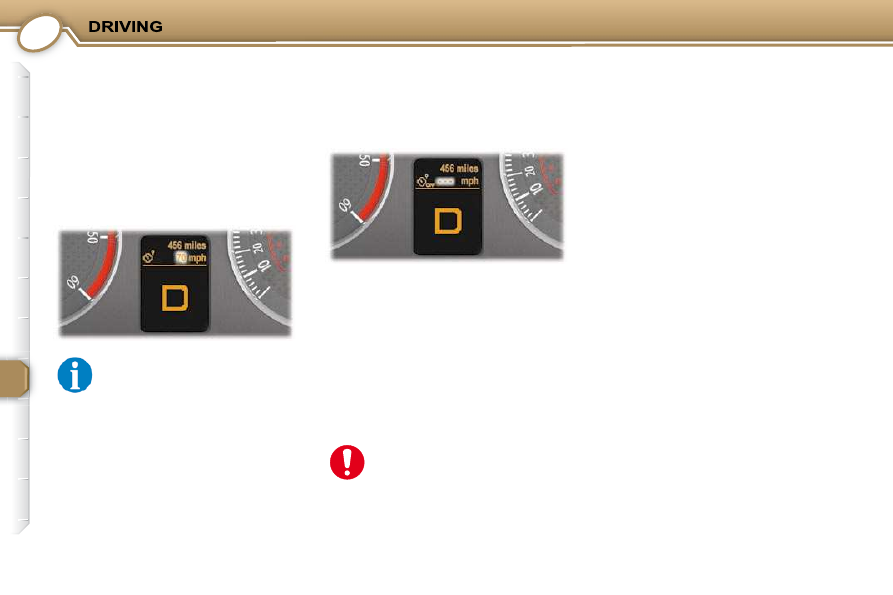Peugeot 407 C (2010.5). Instruction - part 8

8
100
Exceeding the programmed speed
Additional pressing of the accelera-
tor to exceed the programmed speed
will have no effect unless the pedal is
pressed fi rmly (passing the point of
resistance
).
The limiter is deactivated temporarily
and displays the programmed speed
(e.g. at 70 mph (110 km/h)):
To prevent the mat from becom-
ing caught under the pedals:
- ensure that the mat is posi-
tioned correctly,
Operating check
In the event of a limiter malfunction,
the memorised speed is erased, the
dashes fl ash for a few seconds:
Note:
the speed also fl ashes
when the speed limiter can-
not prevent the vehicle from
exceeding the programmed
speed (on a steep descent or in the
event of sharp acceleration).
To re-activate the limiter, release the
accelerator to slow down to a speed
below the programmed speed.
Contact a PEUGEOT dealer to have
the system checked.
- never fi t one mat on top of another.